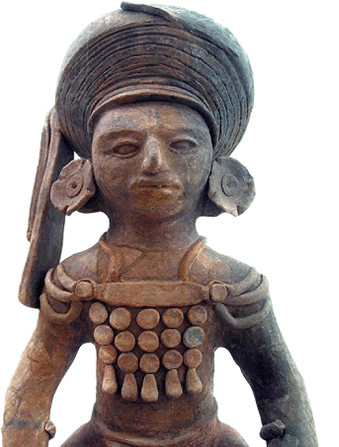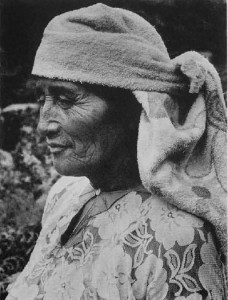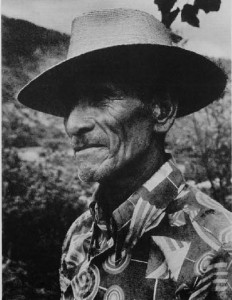“We are not myths of the past, ruins in the jungle or zoos. We are people and we want to be respected, not to be victims of intolerance and racism.” — Rigoberta Menchú, Maya woman from Guatemala and 1992 winner of Nobel Peace Prize
The Maya are indeed a people and they are finally getting some attention from the world. Unfortunately most of that attention is due to the building hysteria around the mistaken belief that their long count calendar predicts the end of the world on December 21, 2012. In actuality, that is the date that marks the beginning of the next Great Cycle of the ancient Maya calendar. But no matter, the important thing is that many eyes around the world are focused on the Maya people. It is our hope that they will see the truth and come to know the real story of how a once great civilization has descended into poverty and despair, but is now poised for renewal and hope for the future.
The Maya have lived in the heart of what now known as Mesoamerica for almost 4,000 years. The Yucatan Peninsula, modern day Guatemala, Belize, the western part of Honduras and El Salvador and parts of the Mexican states of Tabasco and Chiapas were Maya territory. The earliest settlements date back to 1800 B.C. The early Maya grew corn (maize), beans, squash and cassava. They built great cities and stone monuments. By 250 A.D. their Classic Period had begun and their civilization was on its way to over 40 cities with populations ranging from 5 to 50 thousand people.
Their civilization was highly advanced. The cities included palaces, plazas, temples and pyramids. The surrounding farmlands, cleared by slash and burn methods included terracing and irrigation. They possessed a high degree of astrological and mathematical knowledge. Their famous calendar was based on 365 days. They made paper from bark and wrote books, only a handful of which are still in existence.
Eventually it all fell apart. No one really knows why. In the case of the fabled Maya city of Copan, archaeologists believe that in the 9th century the city’s four hundred year dynasty suffered a catastrophic collapse linked to critical social and environmental issues—centuries of unrestrained population growth that forced farmers up onto the steep hill slopes where the deforested farmland became quickly depleted and eroded, resulting in plummeting crop yields and diminished water resources. Mounting nutritional deficits coupled with impure water brought about serious health consequences, problems that eventually even overtook the elite strata of society. The ultimate result was famine, social chaos, and ultimately the collapse of civilized life. The cities slowly became deserted and were overgrown by jungle foliage. By the time the Spanish conquistadors arrived in 1524 the Maya were living in small rural villages. The Spanish brought guns and cannons. The Maya had no unity left and they were defenseless. They were rounded into manageable groups and many were enslaved. This helped to quell any thought of rebellion and aided the priests in their efforts to convert the Maya to Christianity.
This is where most history books leave the Maya behind. But their story did not end. Today, the dessert-like region of steep rugged mountains immediately west of Copan, extending across the modern border into Eastern Guatemala, is the homeland of the Ch’orti Maya, the descendants of the ancient Maya who originally built Copan. On the Guatemalan side of the border, the Ch’orti have preserved their Maya language and many aspects of their traditional culture, while on the Honduran side they have lost most elements of their native culture. Overall, after centuries of onslaught by dominant Spanish-speakers, the Ch’orti have been marginalized to the most hostile parts of the region where subsistence food crops can hardly be grown, and there are periodic famines, and increasing social unrest. In Honduras today close to 60 square kilometers of forest are razed each year. Paradoxically, although Copan is a premier destination for world-wide tourism and a crown jewel for Honduras’ economy, the Municipality of Copan is one of the poorest in all of the country where one quarter of the people live on less than $1 per day.
And this story is repeated throughout the whole region where the Maya once thrived. Honduras and Guatemala suffer from the most severe socioeconomic and environmental ills today, with a large percentage of their rainforest and temperate forests being wiped out due to slash and burn subsistence. Professor Daniel Farber of Northeastern states, “In 1960, wood lands blanketed nearly 60 percent of Central America. Today less than one-third of the original forests remain standing; the rest have vanished”. In particular, the tropical and mountain forests of Central America continue to be destroyed at a frightening speed. Between 1961 and 1991 over half of the forests in Guatemala, Honduras, and El Salvador were cut down — a rate of deforestation that applies to Central America as a whole. At this pace, within decades, the world will be left with little more than a few parks and reserves as vestiges of the great eco-systems of Central America.
Conditions are very poor in the Mayan region. Honduras is the third poorest country in Latin America. The number of rural Honduran households living below the poverty line is estimated at 74.6 percent, of which 60.9 percent live on less than one dollar per day with massive unemployment over 30%. Educational indicators are also low. In rural areas, people complete only 3.5 years of school. The percentage of malnutrition among these children is 42.7 percent. In the Mayan region chronic malnutrition can reach 88 percent. In Guatemala almost 57 percent of the people are poor and 21 percent live in extreme poverty. 49.3 percent of children under 5 suffer from chronic malnutrition. This is the third highest rate in the world. Malnutrition is more prevalent among the indigenous population with rates as high as 69.5 percent. There were over 2,000 deaths from starvation in the Mayan region in 2006.
So here we are in 2012 and one phase of the Maya Calendar is coming to an end. At the same time, 2012 A.D. will bring a cosmic alignment of our solar system with the plane of our Galaxy, the Milky Way. The latter represents the end of a 25,920-year cycle, one based on the Precession of the Equinoxes. Scholars have known for decades that the Mayan ‘Long Count’ system of timekeeping was set to end precisely on a winter solstice, and that this system was put in place some 2300 years ago. We are soon to arrive at that point. As the world focuses on the Maya they must know that their plight is dire and they need our help. Their secret must be known.
One man has been contemplating the fate of the Maya for a long time. He decided to do something about it. His name is David Sedat and he was a chief archeologist for the University of Pennsylvania’s dig at the spectacular ruin in Copan, Honduras. The dig was over in 2003 and David wanted to stay in Copan with his Copan wife, Julia. He climbed atop the nearby hill to the small land holding they had there. He writes, “So, as I stood up here, surrounded by the majestic view of the valley below, I was reminded of how the ancient Maya had portrayed mountains in their sculpture as living anthropomorphic beings that furnished the food and water mankind depended upon for sustenance and life. I knew that when the ancient Mayan king stood on top of the souring temple-pyramid, he incarnated the World Tree at the center of Creation–on the top of the living mountain–where the creative energies of the cosmos were tapped. From these musings I got the idea of turning our wasteland into a Mountain-Pyramid symbol of recovery and regeneration—into a different kind of Botanical Garden showcasing the process of land regeneration and honoring those ancient medicinal plants the Maya had used to heal body and soil. I conceived this visionary “Garden of the Ancient Future” as the proverbial mountain-top spiritual retreat where I would take a personal and independent stand confronting important issues for the contemporary Maya—population growth and poverty, deforestation, loss of farmland, and nutritional deficiencies—all ancient problems with a modern face.”
The next day David started building his New Useful Forest that is described in the PROJECTS page of this website. Maya Global is following his example. We, you and I, all of us, must do something to bring hope to the Maya after so many years of despair. We can help them help themselves. Join our efforts. Click on our GET INVOLVED page. Like us. Help us help them. Together we can accomplish something very meaningful. Let us not focus on December 21, 2012. Let us instead look to December 22. 2012. That is the dawn that counts. Maya Global wants to make one that is filled with optimism for the Maya. You too, can be part of that story.


